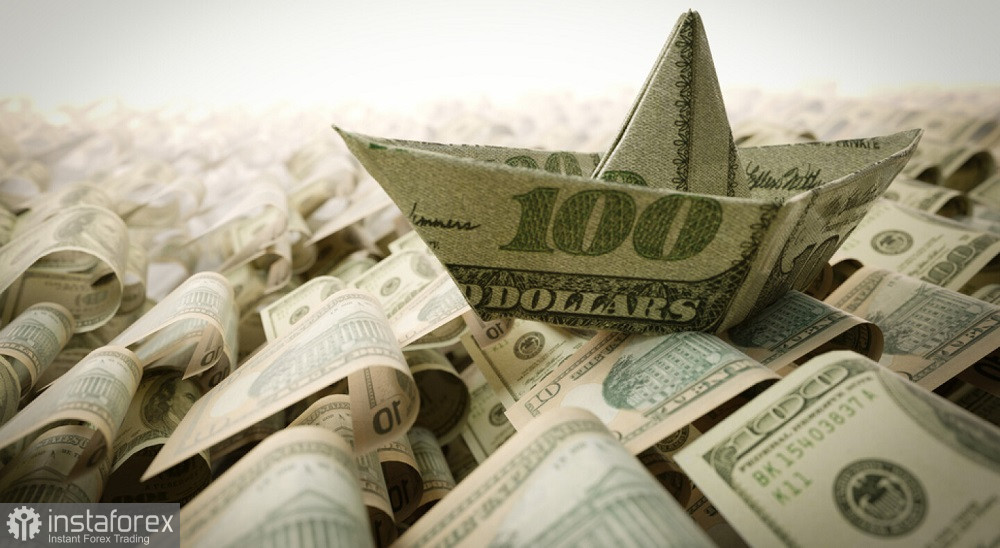The dollar is knocked out. All components of the latest inflation report were in the "red," reflecting a slowdown in inflation in the US. For the second consecutive month, the Consumer Price Index (CPI) slowed more than expected, signaling the downward trend of price rise. This is bad news for dollar bulls. Inflation could have acted as a lifeline for the dollar if June's figures had unexpectedly accelerated, contrary to forecasts. However, the situation for the greenback has become even worse.
By the Numbers
The CPI in monthly terms suddenly fell into negative territory in June (-0.1%) for the first time in the last four years (specifically, for the first time since May 2020). The forecast was at +0.1%. On an annual basis, the CPI also decreased more than expected: against a forecast of 3.1%, it came out at 3.0%. This is the slowest growth rate of the indicator since last November.

The core CPI, excluding food and energy prices, also entered the "red", rising 0.1% month-on-month, against a forecast of 0.3%. This component of the report has shown a downward trend for the third consecutive month, following a three-month stagnation (from January to March inclusive) at 0.4%. Annually, the core index fell to 3.3%, while most experts had predicted it would remain stable at 3.4%. June recorded the slowest growth rate since April 2021.
The structure of the report indicates, among other things, that the growth rate of energy prices slowed to 1% in June (from the previous 3.1%) – for example, gas prices are now down 2.5% from a year ago (following a 2.2% increase in May). New vehicle prices are down 0.9% (previous month -0.8%), and used car prices are down 10.1% (previous -9.3%). Inflation for transportation fell to 9.4% (from 10.5% in May).
Amid the slowdown in the key inflation indicator, dovish expectations regarding the Federal Reserve's future course of actions have intensified in the market. According to the CME FedWatch tool, the probability of the Fed lowering the interest rate at the September meeting has risen to 86%. Traders estimate a 78% probability of a 25-point cut and an 8% probability of a 50-point cut. The likelihood of maintaining the status quo has plummeted to 14%. Thus, the market is almost certain that the Fed will begin to lower rates in September.
Market Reaction
The market reaction was swift. The US dollar index plummeted into the 103 range, simultaneously hitting 5-week lows. The EUR/USD pair demonstrated an impulsive growth and tested the 1.09 range. The dollar is broadly showing weakness amid slowing inflation and preceding rhetoric from Fed Chairman Jerome Powell, who essentially laid the groundwork for such a vigorous reaction. The "time bomb" has gone off.
In his last speech (before the US Congress), the Fed chair said that the central bank is ready to start easing monetary policy but needs "more data" to do so. According to him, the central bank cannot rely solely on May data to declare a sustainable downward trend. If the central bank receives the appropriate signals, it will not hesitate to lower the rate.
"More good data would strengthen our confidence that inflation is moving sustainably toward 2%," said Powell.
These words were spoken two days before the latest report. Given this position, it can be assumed that the June data is "favorable" – indicating that inflation is moving toward the target level.
Another point to note: during his speech to Congress, Powell made it clear that the US labor market is no longer a source of broad inflationary pressures for the economy. "The labor market appears to be fully back in balance," Powell said, which strengthens the arguments in favor of easing monetary policy.
And as a cherry on top, it's worth recalling another phrase he mentioned in Congress – cutting interest rates "too late or too little could unduly weaken economic activity and employment", he said.
Conclusions
The fundamental background still plays against the greenback: inflation is slowing down, dovish expectations are growing, and the rhetoric of the Fed chair is softening. The last piece of the puzzle is the Producer Price Index (PPI). We will learn the June PPI value on Friday, July 12, but nothing will change even if (possible) the PPI accelerates. However, a probable slowdown will cement the dovish scenario, which is most likely to be realized in September.
Although EUR/USD bulls were unable to impulsively "conquer" the 9th figure, the established fundamental background for the pair favors further price growth. Therefore, price pullbacks should be considered an opportunity to open long positions. The first target of the upward movement is the 1.0900 mark, with the main target being 1.0950 (the upper line of the Bollinger Bands on the W1 timeframe).
 English
English 
 Русский
Русский Bahasa Indonesia
Bahasa Indonesia Bahasa Malay
Bahasa Malay ไทย
ไทย Español
Español Deutsch
Deutsch Български
Български Français
Français Tiếng Việt
Tiếng Việt 中文
中文 বাংলা
বাংলা हिन्दी
हिन्दी Čeština
Čeština Українська
Українська Română
Română

